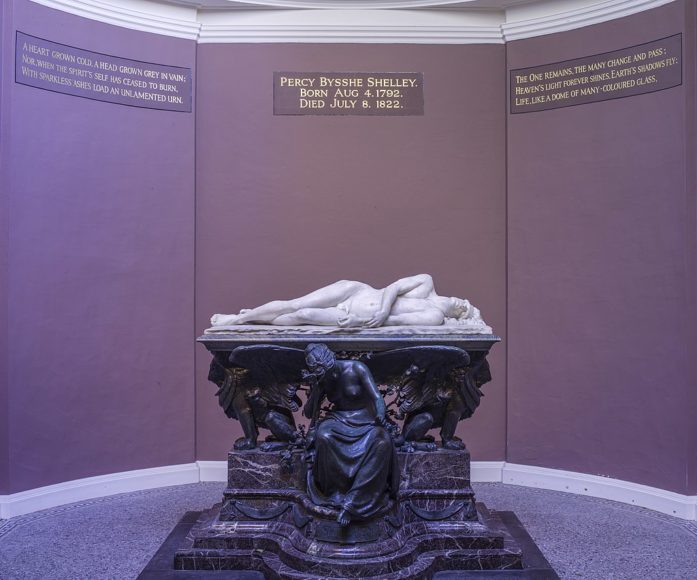Peace, peace! he is not dead, he doth not sleep,
He hath awaken’d from the dream of life – From Percy Bysshe Shelley’s “Adonais: An Elegy on the Death of John Keats”
Percy Bysshe Shelley – who at 29 drowned in a boating accident off the coast of Italy 200 years ago tomorrow – wrote these words about fellow poet John Keats. But he just as well might’ve written them about himself. Kicked out of Oxford University for his atheistic views, estranged from his family for an unconventional lifestyle that led him to abandon one wife, Harriet Westbrook, for another (Mary Godwin Shelley, author of “Frankenstein”) while carrying on an affair with Mary’s stepsister, Claire Clairmont, Shelley is today regarded as one of the finest of the English Romantic poets – along with Keats; George Gordon, Lord Byron; Samuel Coleridge; and William Blake – for such works as “Adonais,” “Ozymandias,” “Ode to the West Wind” and “Prometheus Unbound.”
While some biographers have depicted him as a self-centered individual, his open-mindedness and open-heartedness – he was a vegetarian and advocate for nonviolence – had an influence on later-19th and 20th century thinkers.
After his death, his wife Mary continued writing – in part to support herself and her one surviving child, Percy Florence Shelley – and advocating for women’s rights. (She was the daughter of the feminist Mary Wollstonecraft.) But she was also a professional widow who sought to broaden and deepen her husband’s literary reputation even, critics said, as she rehabilitated his personal one. Her daughter-in-law, Jane, picked up that ball and ran with it, commissioning Edward Onslow Ford’s neoclassical tribute to the drowned poet at the very school that had expelled him.
This sculpture figures in one of the best – if not the best – episodes of the British police series “Inspector Lewis,” “And the Moonbeams Kiss the Sea.” It’s a mystery all about art, math, the Shelleys, “Frankenstein,” being on the spectrum, gambling addiction and game theory. But mostly it’s about how we create what Shelley himself called “the painted veil” – that illusory thing that is life itself.


